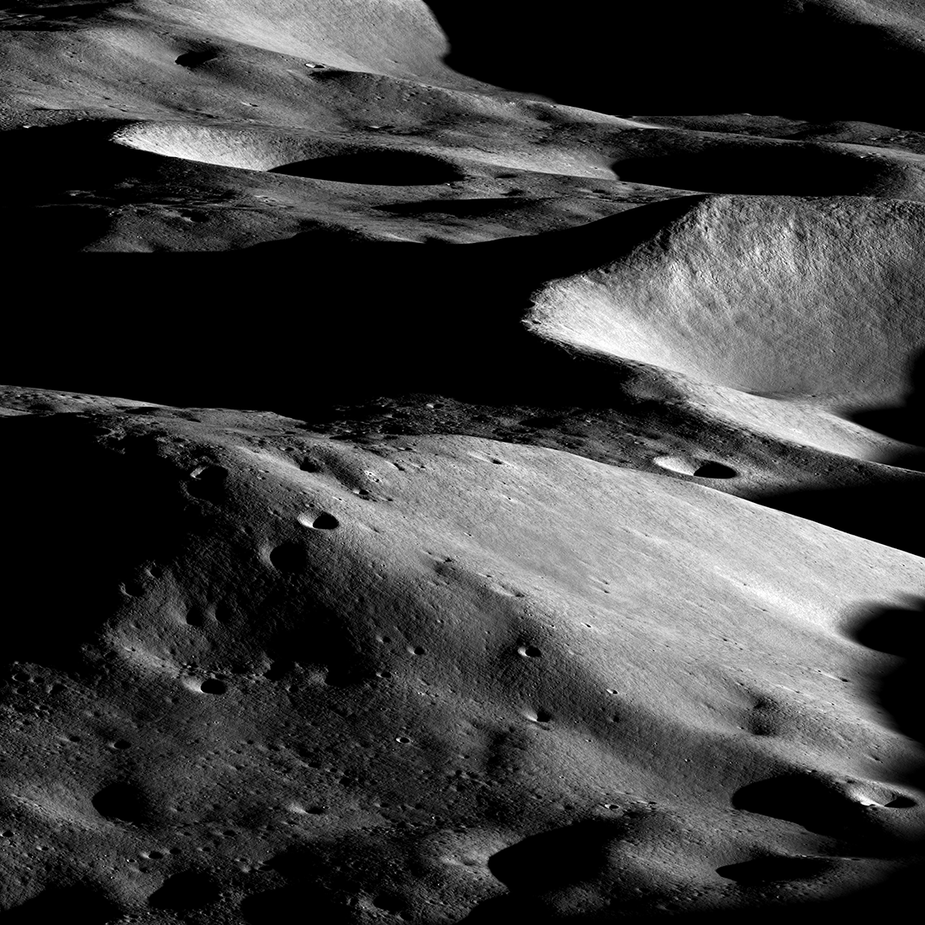Lee esta historia en español aquí.
NASA has its sights set on the lunar South Pole area for the Artemis era of human lunar exploration. Extreme, contrasting conditions make it a challenging location for Earthlings to land, live, and work, but the region’s unique characteristics hold promise for unprecedented deep space scientific discoveries that could help us learn about our place in the universe and venture farther into the solar system.
Lighting and Terrain
At the lunar South Pole, the Sun hovers below or just above the horizon, creating temperatures upwards of 130°F (54°C) during sunlit periods. Even during these periods of illumination, soaring mountains cast dark shadows and deep craters protect perpetual darkness in their abysses. Some of these craters are home to permanently shadowed regions that haven’t seen sunlight in billions of years and experience temperatures as low as -334°F (-203°C).
Even using advanced sensors, the combination of terrain and lighting conditions will make it difficult to tell what the ground looks like from a vehicle descending to the lunar South Pole, and some systems may be vulnerable to rising and plummeting temperatures.
Astronauts descending to the lunar surface will be able to manually take control of a lander’s onboard automated guidance system if necessary, as Neil Armstrong did when the Eagle’s guidance system steered them four miles off course, heading toward a field of boulders. Armstrong had a clear, sunlit view of the Moon below, but Artemis astronauts will have a disrupted view, with long dark shadows hiding important terrain features. To help them navigate, they will have the advantage of preloaded maps providing topographic details from robotic missions like the Lunar Reconnaissance Orbiter (LRO) along with advanced training using technology not available to Apollo crews.
Discovery
Breakthrough discoveries from robotic missions like LRO, the Lunar Crater Observation and Sensing Satellite, and the SOFIA flying observatory have confirmed that the Moon is not a bone-dry, dormant world. NASA’s Artemis I flight test will deploy two CubeSats to advance the search for lunar resources, and a water-hunting rover, VIPER, will be the first resource-mapping mission on another planetary body.
Beyond robots, human exploration of this previously unexplored area of the Moon introduces a unique opportunity for scientific discovery. Artemis crews will conduct field geology, deploy instruments, and collect samples that will help us understand planetary processes and the character and origin of lunar polar volatiles. Volatiles are chemical elements or compounds in a solid state that melt or vaporize at moderately warm temperatures. An ice cube is an example of a chemical compound volatile. It is made up of two parts hydrogen and one part oxygen, and it begins to melt when exposed to temperatures above 32°F (0°C). At water’s boiling point, it begins to vaporize. The permanently shadowed regions near the poles act as traps for an array of volatiles, with each melting and vaporizing at different temperatures.
“Lunar volatiles are likely trapped in permanently shadowed regions of the Moon, and those volatiles have a story to tell us about the history of the solar system,” said Jake Bleacher, NASA’s Chief Exploration Scientist at NASA Headquarters in Washington. “The ability to extract deep core samples and maintain their temperature and vacuum properties all the way back to research facilities on Earth could lead to powerful discoveries—not only about the volatiles, but also about the history of our solar system.”
These deep core samples will be a 4.5-billion-year testimony about the solar system. The stratigraphic and textural record will get older as the cores get deeper, laying out a detailed report of the history of our Earth-Moon system. A leading theory suggests that a very young Earth collided with another planet about the size of Mars, spewing globs of the two bodies into space, with bits and pieces captured and molded by Earth’s gravity field to become our Moon.
The core samples and volatiles collected with human precision and real-time decision making will significantly amplify the catalog of data from robotic missions tracking the abundance and distribution of volatiles. This knowledge could have a profound impact on the future of deep space exploration and commerce, leading to lunar resource mining to reduce the amount of supplies like oxygen and hydrogen—key life sustaining elements and ingredients for rocket fuel—sent from Earth to support humans in deep space.
New Century, New Exploration
More than 50 years after Apollo, we aren’t just returning to the Moon, we’re going to an incredibly unique location to commence a new era of deep space science. The South Pole has striking features that present new opportunities for long-term deep space science and exploration. Although landing, living, and working in these polar conditions will be challenging, technology advancements underway for Artemis will meet these challenges and potentially lead to some of the greatest discoveries of the 21st century.























